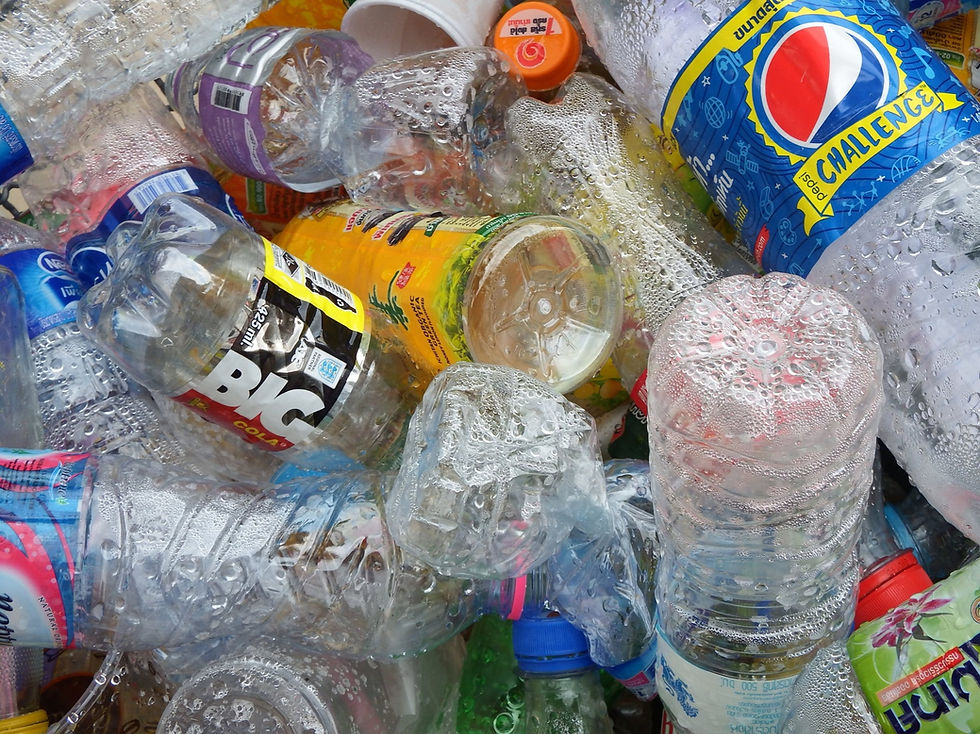Let’s Talk Fashion
- Just Love

- Sep 22, 2020
- 4 min read
By Luana Ackermann
“What does fashion have to do with justice?”, you might ask. Well, my favourite definition of justice is right relationships, with ourselves, other people, our planet and our loving creator. When using this lens to look at the fashion industry it quickly becomes apparent that justice is hard to find:
The total greenhouse gas emissions from textile production amount to 1.2 billion tonnes annually. That is more than the emissions of all international flights and maritime transports combined!
The fashion industry is identified as one of five key industries contributing to the prevalence of modern slavery! (Source: Global Slavery Index)
And finally over 50% of fast fashion is disposed of in under a year! (Source: future learn)
These are just some examples of the fashion industry’s broken relationships. So, I hear you thinking, fast fashion is bad, but sustainable, ethical fashion is so much work and really expensive. Also how does one even go about finding out if brands are sustainable? Am I not losing more than I’m gaining in giving up fast fashion?
I get it, it can be really overwhelming thinking about sustainability and ethical choices. There’s so much to think about, food, transport, waste… My suggestion is to pick one area, like fashion, do research and begin rethinking consumer choices in just that one area. Why not try a week or a month without fast fashion? Instead, upcycle and repair what you have, borrow from a friend or shop second hand. If you do want to buy a new item, put in the extra time and find a sustainable alternative to high street items, the quality and a clear conscience are worth the price.
That takes us to the next question, how can I tell if a brand is sustainable, i.e. actively cares about the planet and the people in their supply chain? First let’s highlight some aspects that define sustainable, ethical fashion. Simply put, it should be both as planet and people friendly as possible. This includes minimum waste, natural and recycled materials, reduced energy and water usage, fair wages, no forced labour, fair working conditions and no child labour. How you choose to determine a brands ethicality comes down to your own values. If, for instance you are vegan you may not buy from brands who use animal products.
Transparency is key. It should not be hard to find out where and how a company produces if it’s at the core of their values. If a brand does not disclose any information about sustainability related practices, they probably aren’t sustainable. Sometimes it’s that simple. A good place to read up on transparency is Fashion Revolution’s Transparency Index (fashionrevolution.com).
Some brands however, use fancy terms and graphics describing their steps towards sustainability. This is when brand checks come in handy. Good On You, for example lets you check a brand’s rating based on multiple indicators (https://goodonyou.eco). A further option to finding sustainable brands is through ethical fashion directories. There are already quite a few good ones out there, including the Dressember Ethical Fashion Directory (https://www.dressember.org/directory), donegood.co, ethicalmadeeasy.com, thegoodtrade.com, wellmadeclothes.com, madetrade.com and peopletree.co.uk. These sites allow you to browse or search for specific items.
If you find out a brand you love isn’t ethical, this doesn’t have to mean you can never buy from them again. As consumers we vastly underestimate our power! Why not email them, letting them know why you can no longer buy their clothes? You could also ask specific questions about worker’s rights or pollution. Beginning to see my every purchase as a vote was the most powerful shift on my sustainability journey so far.
Sustainable fashion adds value to your life knowing you did not enslave others or harm the planet with your consumer choices. The clothes you buy become more special, as they have a pre-existing story, are less generic or are of a higher quality. It’s also not going to be as expensive as you think, because a) second hand is cheaper and b) you might soon realise that you need fewer clothes than you buy.
Let’s round this up with some action ideas: You could pledge to buy no new clothes for a month. Explore the gems of a local charity shop. Make your own depop account and sell clothes you no longer wear. Organise a clothes swap, with friends whose wardrobe you’ve always wanted to steal ;) . Make your own clothes or change something you bought that doesn’t quite fit (youtube has great tutorials). If all of the above isn’t for you, why not try limiting your ethical fashion choices to one item. For example, you could say, from now on I will only buy second hand or ethical jeans. This way you can slowly introduce more items and make your wardrobe more sustainable, step by step.
As with anything else, it is so much easier if you’re not doing it alone. Try to find some like-minded pals to go charity shopping with, or start following ethical fashion accounts on instagram. And of course, we would love you to join our little JL Aberdeen community too. Finally, remember that each purchase you make is a vote. What world are you creating? How will you vote?







Comments